Filter by
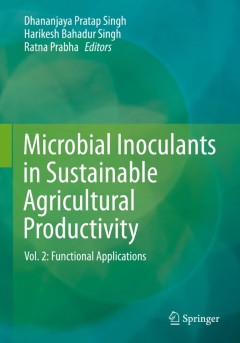
Microbial Inoculants in Sustainable Agricultural Productivity
The performance of crops in the soil largely depends on the physico-chemical components of the soil, which regulate the availability of nutrients as well as abiotic and biotic stresses. Microbes are the integral component of any agricultural soil, playing a vital role in regulating the bioavailability of nutrients, the tolerance to abiotic and biotic stresses and management of seed-borneand soi…
- Edition
- 1
- ISBN/ISSN
- 978-81-322-2642-0
- Collation
- XVI, 308
- Series Title
- -
- Call Number
- -

Microbial Inoculants in Sustainable Agricultural Productivity
The performance of crops in the soil largely depends on the physico-chemical components of the soil, which regulate the availability of nutrients as well as abiotic and biotic stresses. Microbes are the integral component of any agricultural soil, playing a vital role in regulating the bioavailability of nutrients, the tolerance to abiotic and biotic stresses and management of seed-borneand soi…
- Edition
- -
- ISBN/ISSN
- 978-81-322-2642-0
- Collation
- Number of Pages XVI, 308
- Series Title
- -
- Call Number
- -

Microbial Inoculants in Sustainable Agricultural Productivity
How to achieve sustainable agricultural production without compromising environmental quality, agro-ecosystem function and biodiversity is a serious consideration in current agricultural practices. Farming systems’ growing dependency on chemical inputs (fertilizers, pesticides, nutrients etc.) poses serious threats with regard to crop productivity, soil fertility, the nutritional value of far…
- Edition
- 1
- ISBN/ISSN
- 978-81-322-2645-1
- Collation
- XVIII, 343
- Series Title
- -
- Call Number
- -
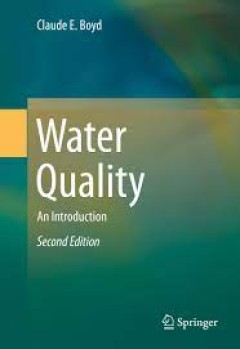
Water Quality An Introduction
The revised second edition updates and expands the discussion, and incorporates additional figures and illustrative problems. Improvements include a new chapter on basic chemistry, a more comprehensive chapter on hydrology, and an updated chapter on regulations and standards. This book presents the basic aspects of water quality, emphasizing physical, chemical, and biological factors. The s…
- Edition
- -
- ISBN/ISSN
- 978-3-319-17446-4
- Collation
- 71 b/w illustrations, 3 illustrations in colour
- Series Title
- -
- Call Number
- -

Vision Infinity for Food Security Some Whys, Why Nots and Hows!
A new perspective on the global food security situation and highlights the need for seeking a common vision and implementing global planning to define the manner in which the human species will manage its food security. The basic question of ‘is there enough food’ is examined in general and then in some detail. The history of food production is reviewed in the hope that lessons can be learn…
- Edition
- -
- ISBN/ISSN
- 978-3-319-23249-2
- Collation
- XVII, 98
- Series Title
- -
- Call Number
- -
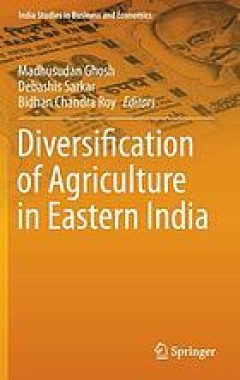
Diversification of agriculture in eastern India
Divided into three parts - Rationale and Extent of Agricultural Diversification, Nature and Problems of Agricultural Diversification, and Food and Livelihood Security through Agricultural Diversification, this edited book examines various aspects of agricultural diversification in Eastern India. In recent years, Indian agriculture has been diversifying from cereals to high-value crops and lives…
- Edition
- -
- ISBN/ISSN
- 9788132219972
- Collation
- 242 pages
- Series Title
- -
- Call Number
- 630.954
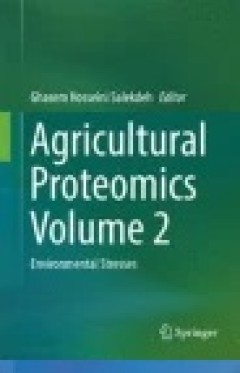
Agricultural Proteomics Volume 2: Environmental Stresses
This book will cover several topics to elaborate how proteomics may contribute in our understanding of mechanisms involved in stress adaptation. The knowledge being accumulated by a wide range of proteomics technologies may eventually be utilized in breeding programs to enhance stress tolerance. This book presents comprehensive reviews about responses of crop and farm animals to environmental s…
- Edition
- Ed. 1
- ISBN/ISSN
- 978-3-319-43278-6
- Collation
- XI, 314
- Series Title
- -
- Call Number
- 630 AGR a

Agricultural Proteomics Volume 1: Crops, Horticulture, Farm Animals, Food, In…
This book will cover several topics to elaborate how proteomics may enhance agricultural productivity. These include crop and food proteomics, farm animal proteomics, aquaculture, microorganisms and insect proteomics. It will also cover several technical advances, which may address the current need for comprehensive proteome analysis.An emerging field of the proteomics aim is to integrate kno…
- Edition
- Ed. 1
- ISBN/ISSN
- 978-3-319-43275-5
- Collation
- XI, 255
- Series Title
- -
- Call Number
- 630 AGR a
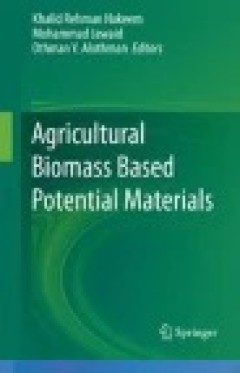
Agricultural Biomass Based Potential Materials
Agricultural biomass is abundant worldwide and it can be considered as alternative source of renewable and sustainable materials which can be used as potential materials for different applications. Despite this enormous production of agricultural biomass, only a small fraction of the total biomass is utilized for different applications. Industry must be prepared to take advantage of the situati…
- Edition
- Ed. 1
- ISBN/ISSN
- 978-3-319-13847-3
- Collation
- XXI, 505
- Series Title
- -
- Call Number
- 630 AGI a
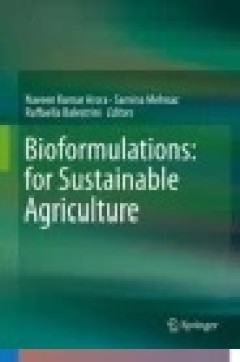
Bioformulations: for Sustainable Agriculture
More than a century has passed since the first bioformulations were introduced to the market. But there is still much to be done, explored and developed. Though bioformulations offer green alternatives and are important for sustainable agriculture, they make up only a small fraction of the total additions used to enhance crop yields or protect them from pests. There is a great need to develop b…
- Edition
- -
- ISBN/ISSN
- -
- Collation
- -
- Series Title
- -
- Call Number
- 630
 Computer Science, Information & General Works
Computer Science, Information & General Works  Philosophy & Psychology
Philosophy & Psychology  Religion
Religion  Social Sciences
Social Sciences  Language
Language  Pure Science
Pure Science  Applied Sciences
Applied Sciences  Art & Recreation
Art & Recreation  Literature
Literature  History & Geography
History & Geography